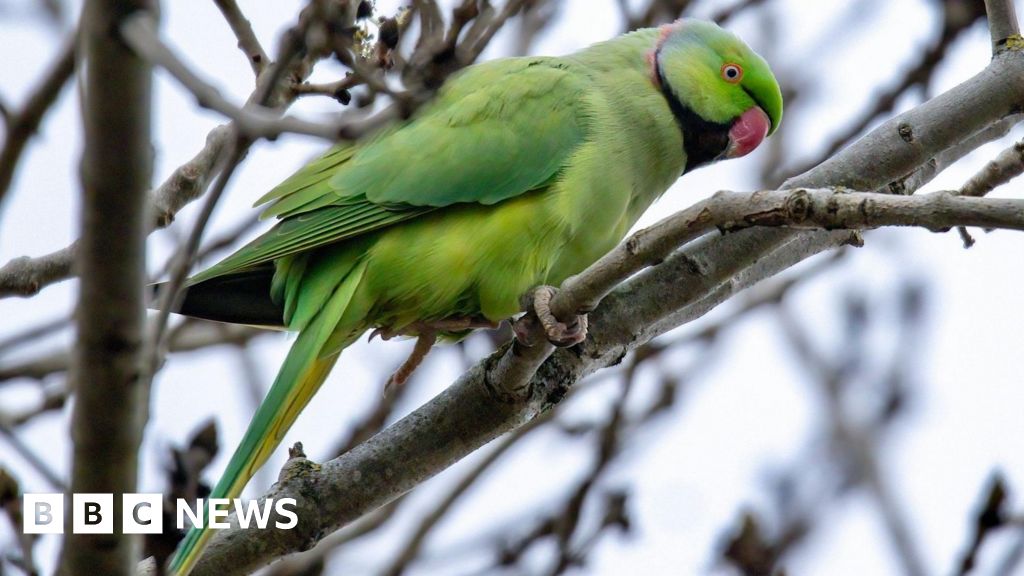BBC News NI
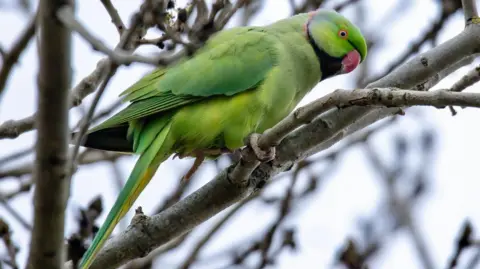 Michael Latham / Northern Wildlife Pics
Michael Latham / Northern Wildlife PicsAmateur wildlife photographers have been flocking to a north Belfast park to spot a tropical new arrival.
Bedecked with emerald green feathers and a rose-red beak, the ring-neck parakeets have become the star attraction at the Waterworks Park.
Originally from the Himalayas, the Indian sub-continent, and parts of Africa, ring-necked parakeets are regularly spotted across the UK, with large populations in London and the south-east of England.
It’s estimated that about 15 of these parrots have found a new home in the foothills of Cavehill.
The RSPB describes ring-necked parakeets, sometimes known as rose-ringed parakeets, as the UK’s only naturalised parrot.
Dot Blakely, a bird expert who teaches bird-watching courses at Belfast Metropolitan College and Queen’s University Belfast (QUB), said she brings students to the park to study the new residents.
“The parakeets are likely to have come over from London,” she said. “It’s likely they moved across to the Republic of Ireland before moving up.”
“We’re seeing more birds come across because of climate change, so many birds that we wouldn’t have seen here before.
“People still think of it as a tropical bird but it has adapted.”

Ms Blakely told BBC News NI she thinks there are about 13 to15 parakeets living in the park, which indicates they are getting enough food to sustain a small colony and are likely to be breeding.
“There are lots of berries around the area, but lots of locals are leaving seed out for them,” she added.
“Sometimes you’ll see the birds right up at people’s windows waiting to get fed.”
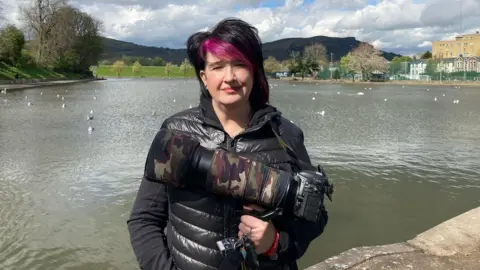
The brightly coloured birds have been attracting amateur photographers to the park.
Sharon Gregg, who took up photography after being diagnosed with a rare illness, told BBC News NI spending time in nature and watching the birds has had a positive effect on her wellbeing.
“When I first heard about the birds last month I would say: ‘I’m away to look for the parrots.’
“People would think I was mad,” she said.
Ms Gregg has photographed eight parakeets in one sitting before.
“I think the parakeets are such wonderful, special little birds and a lot of people don’t even realise they are in the trees up above them,” she said.
“They are really comical, cheeky wee things, and they are just a pleasure to watch.”
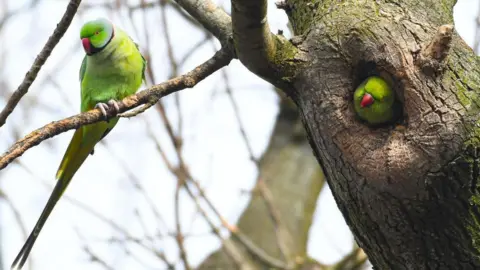 Sharon Gregg
Sharon GreggMichael Latham, from Bangor, is a keen twitcher, someone who goes to extraordinary lengths to see new bird species.
He has travelled to the area to see the birds a number of times over the past few years.
“The number has grown a bit over the last while,” he said.
“There have been reports of breeding, but we think there is only one male.”
Did Jimi Hendrix release the parakeets?
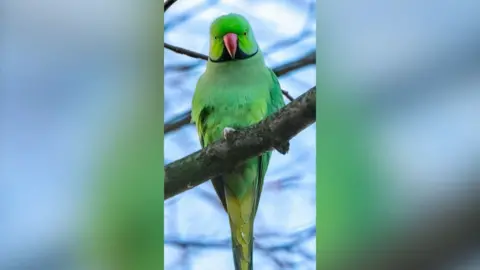 Michael Latham / Northern Wildlife Pics
Michael Latham / Northern Wildlife PicsAre parakeets an invasive species?
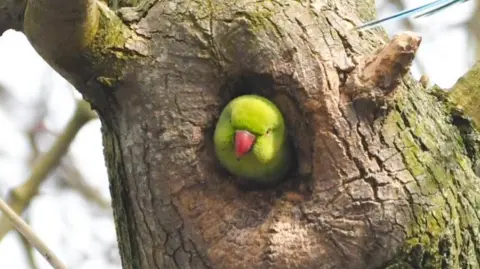 Sharon Gregg
Sharon GreggParakeets are a non-native bird so they are classed as an invasive species.
Conor McKinney, the chair of Wild Belfast said: “Parakeets may seem like a novel addition to our wildlife, but really they are pose a great risk to birds, bats, and to agriculture.
“Parakeets have the ability to out-compete native cavity nesting species, such as starlings, and have even been known to evict bats from their roosts,” he said.
“Preventing the further dispersal of this species is possible, but it needs to happen soon.
“We call on Belfast City Council and the Northern Ireland Environment Agency to return the birds to captivity and negate any potential risks of further spread.”
